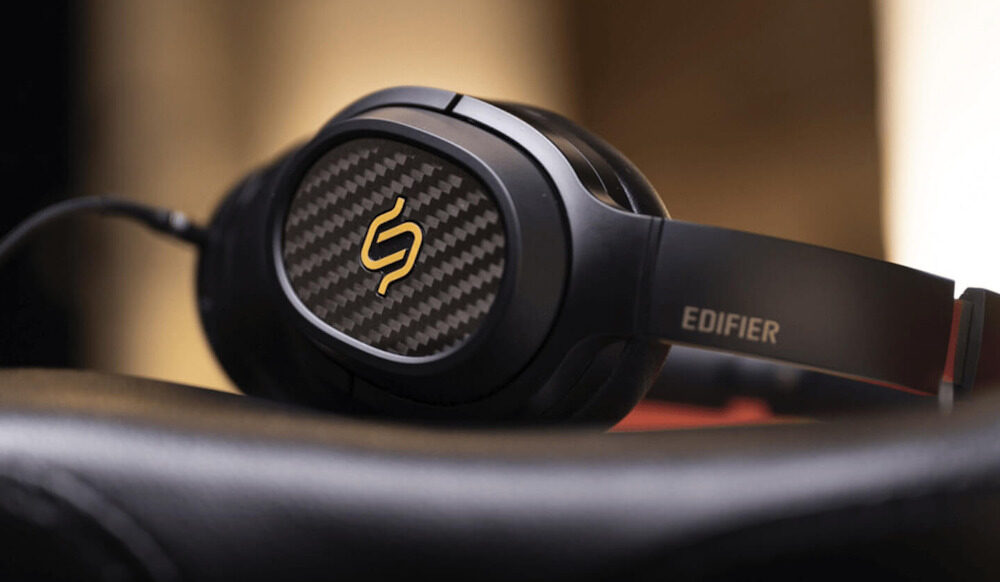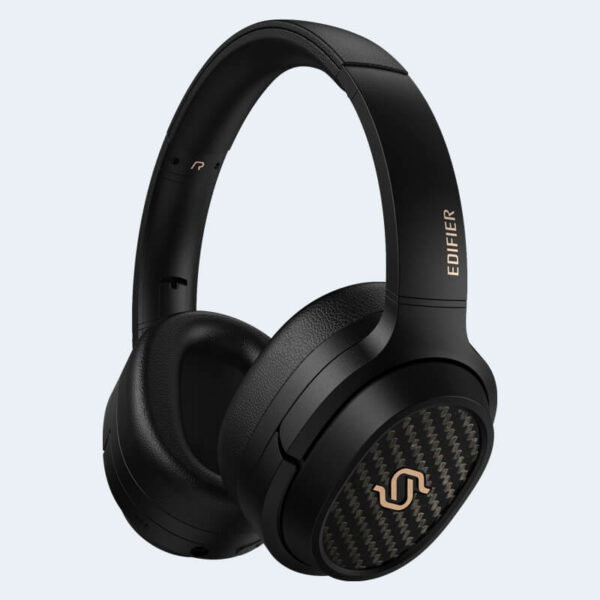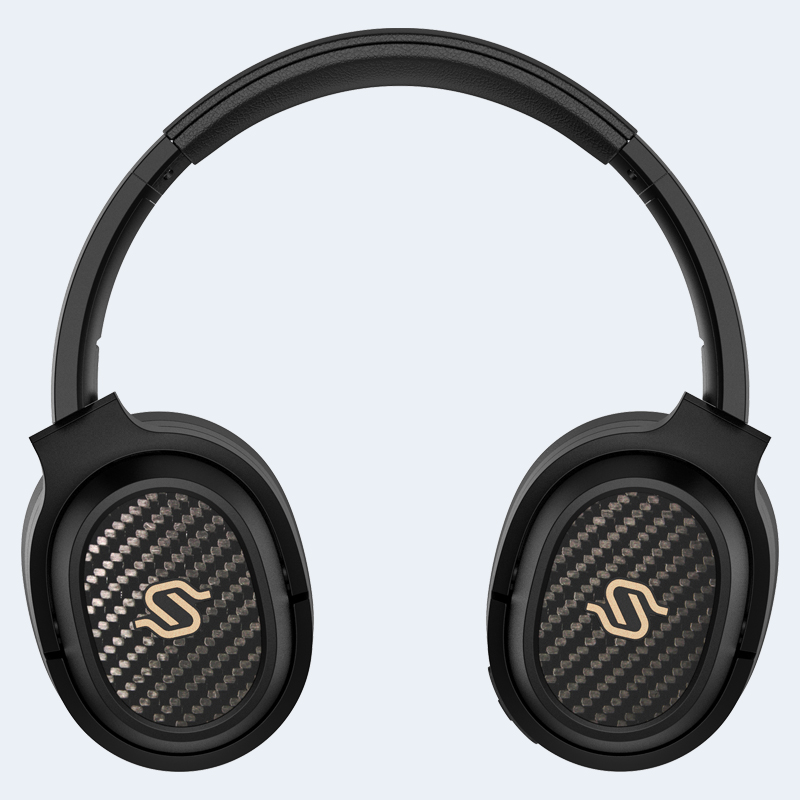
Few audio brands like Edifier comply with the maxim of the “three Bs”: good, nice and cheap (for what they offer). So when the Chinese multinational announced a few months ago that it was launching its Stax Spirit S3 headphones, its first Bluetooth headphones with a planar-magnetic driver, it didn’t take us long to launch ourselves to try them.
But before we go into more detail about what Edifier puts in our hands (or in this case, our ears) let’s get down to the basics. What is a planar-magnetic headset? In this type of device, an electrical conductor moves between fixed magnets when an audio signal passes through it. The driver is attached to an extremely flat diaphragm, and magnets are placed on either side of the diaphragm to produce a uniform magnetic field.
Its main advantage over dynamic headphones (most of the ones we will find in the entry-level and mid-range on the market) is that they create less harmonic distortion and much more accurate audio reproduction. The consequence is that they are usually more expensive headphones, but also heavier and larger since they need to have a built-in amplifier. On paper offer not only a very small degree of distortion, but also a great frequency response in its neutral tone and a sound very faithful to the original source. Instead, the sound can be somewhat flatter.
That said, let’s see how Edifier’s proposal and its S3 are. First of all, it is worth noting the fact that we are not dealing with just any headphones. After the acquisition in 2011 of the legendary Japanese Hi-Fi audio company, Stax, the Chinese multinational continued to develop its wonderful catalog of electrostatic headphones (its new model, the Stax SR-X9000 sells for more than 6,000 euros) to incorporate the spirit of the firm in the development of its own premium headphones, at a price, yes, much more content: in this case, it is possible to find it in authorized distributors for a price ranging between 300 and 500 euros.
Construction and components
Constructed of high-quality plastic, its exterior design is inspired by the colors and logo of the classic brand, betting on marbled matte surfaces and a golden creativity in the center, riskily “retro” and we are not sure if everyone will like it …And it is that although they are sold as premium headphones (which in many sections they are) the design perhaps lacks a bit.
Thicker of course than a dynamic headset, in fact its good balance means that we do not feel excessively heavy. On the other hand, in addition to their Bluetooth connectivity, they also have a 3.5mm jack plug. for those who prefer to enjoy an audio experience even closer to the original source.
But let’s go back to what’s so special “inside”. Besides having inherited the know-how that, in the development of this technology, Stax has, Edifier has once again valued its alliance with another great headphone firm: the American Adueze. The result of this collaboration is the new EqualMass diaphragm development technology that, according to the company’s promises, offers a “extreme precision”. In this sense, what we find here is the combination of the magnetic structure Adueze Fluxor, the diaphragm uniforce and the phase manager fazor, performing on this task.
Certified to respond to all types of Hi-Fi and HD codecs, the brand combines this flat magnetic technology with its compatibility with Qualcomm Snapdragon Sound, technology developed by Qualcomm to get the most out of audio chips and guarantee optimum quality. of sound (which results in the highest bitrates and lowest latencies) and that it has support for the most demanding standards: LDAC and LHDC and its ability to retransmit audio at 24 bits/96 kHz. But it is also compatible with external DACs and is compatible with formats such as LPCM (Linear Pulse Code Modulation), the standard used to record in audio containers such as WAV or AIFF, or work with high-fidelity lossy compression formats, such as the standard of Tidal MQA (Master Quality Authenticated).
Curiously however, they are not compatible with one of the most popular codecs on the market: Apple’s AAC. Apparently a problem with the renewal of the license between the two companies has caused this codec to finally not reach Edifier’s headphones and it does not seem that there are plans for it to end up arriving. This means that if you usually listen to your music from an iPhone or similar, although you can continue to do so through the SBC codec, you will not access the quality that you do find in AAC… so perhaps these are not the headphones that interest you the most .
Autonomy, connectivity and sound quality
Edifier promises us in these headphones an autonomy of up to 80 hours, also incorporating a quite interesting fast charging function (through its USB-C port): in 10 minutes we can recharge them enough to obtain 11 hours of listening. Part of the fact that it offers us such a long autonomy (although in our tests we have never reached those 80 effective hours) we find it in the fact that these headphones do not offer us no active noise cancellation technologyAlthough we must admit that the isolation they offer in environments with medium noise is more than acceptable. In any case, due to both its weight and its dimensions, its use seems more appropriate for our home/office than for taking it on the street, where it can be somewhat cumbersome.
Its Bluetooth connectivity allows us to pair it with two different audio sources, which, for example, can serve us both to tune it to our audio equipment and simultaneously with our smartphone to receive calls. For the latter task, Qualcomm also offers us its Qualcomm aptX Voice audio technology, which promises to greatly improve the signal-to-noise ratio, delivering 32kHz voice call quality. In our opinion, this is little more than a curiosity, since in practice it is more convenient to remove the headphones to answer the call on the phone than to switch between the two sources… especially if we are at home. However, when we get used to using this feature, it works correctly, without actually noticing a spectacular leap in quality.
Another thing is to talk about its quality when it comes to playing music, with deep basses, sharp, clear voices and free of any sibilance, offering a very balanced set throughout its dynamic range, without a shadow of distortion being noticed at any time. (perhaps at the cost of the lower bass losing a bit of presence) and actually, excellent quality, based on the very high-quality components it offers.
As a complement, Edifier puts in our hands Edifier Connect, an application that allows us to update the firmware of the device, change the functionality of the button on our headset and change the sound profile depending on the pads we are using. It also includes a small equalizer that allows us to navigate between three preset settings (classic, Hi-Fi and Stax) but it is striking that it does not offer us a true equalizer, or at least one that allows us to switch between different musical styles.
conclusions
Better known for its speakers than for its headphones, Edifier puts in our hands a device that aspires to conquer the upper-middle part of the market. And it has good arguments for it: high quality internal components, good value for money and the Stax seal that is a guarantee of quality for any audiophile.
In this sense, the Edifier Stax Spirit S3 offer a very convincing and high-quality sound experience in the musical section, although some details can be criticized, such as the lack of compatibility with AAC, a mobile application that is not up to the task or a look and feel that does not convey all that premium sensation that it promises. All in all, a good option in its price range.
ABSTRACT
Better known for its speakers than for its headphones, Edifier puts in our hands a device that aspires to conquer the upper-middle part of the market. And it has good arguments for it: high quality internal components, good value for money and the Stax seal that is a guarantee of quality for any audiophile.
Design and build quality7.5
Installation and software7.5






